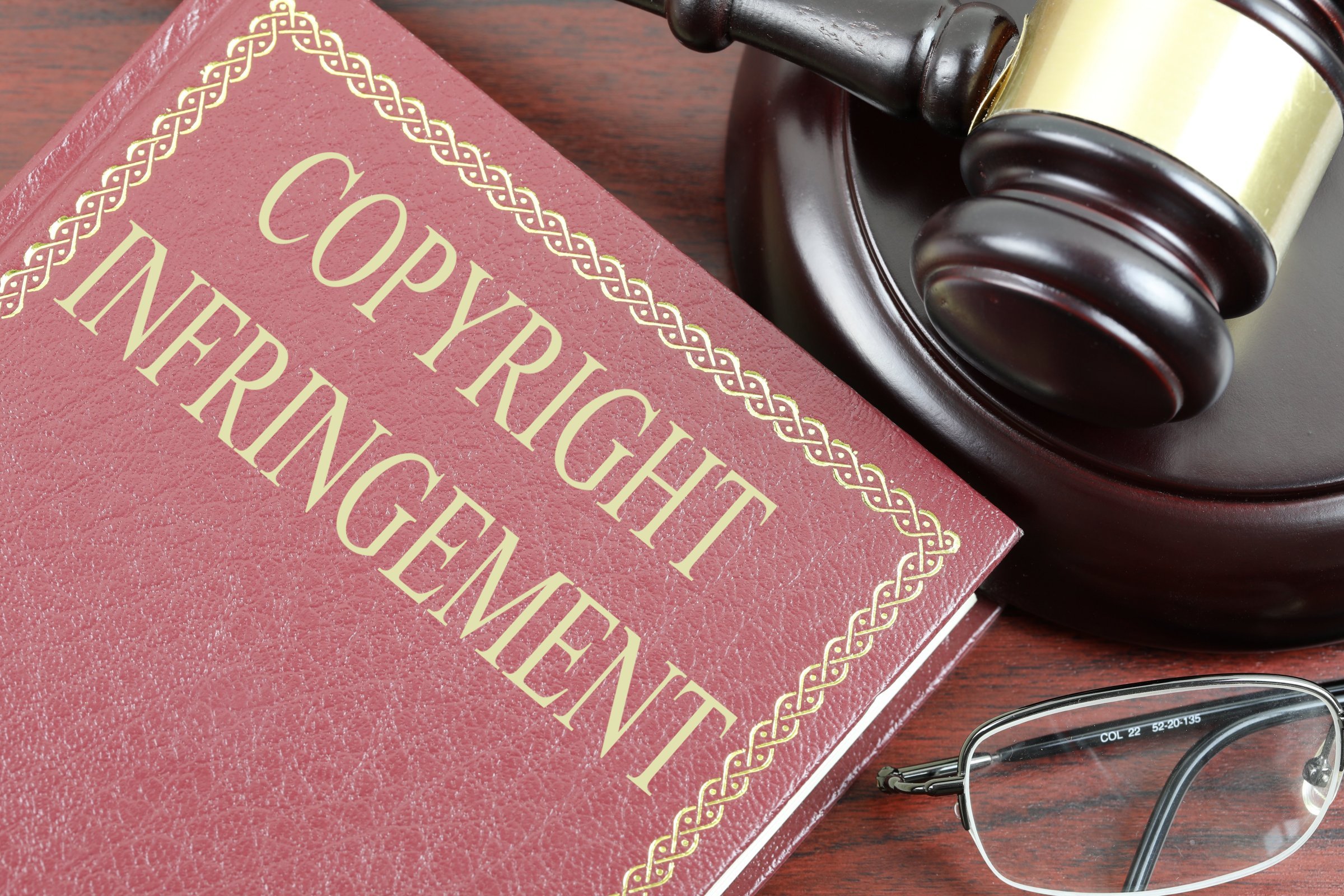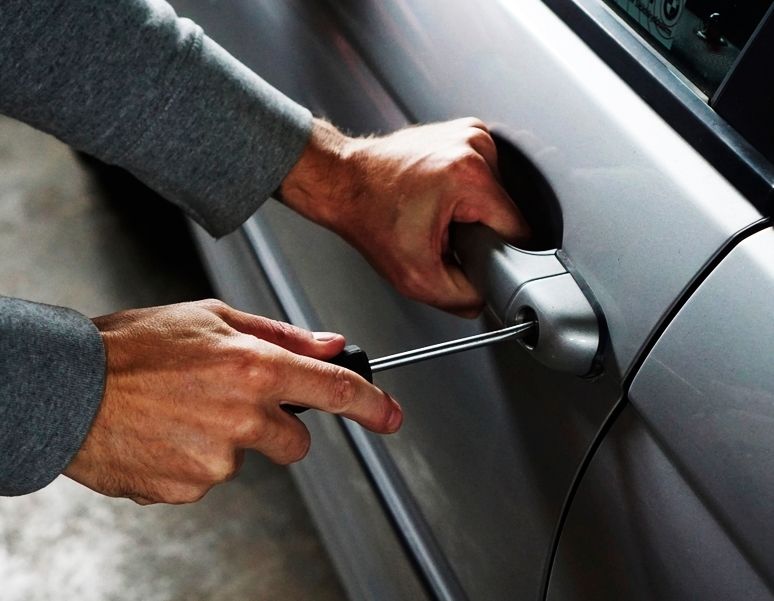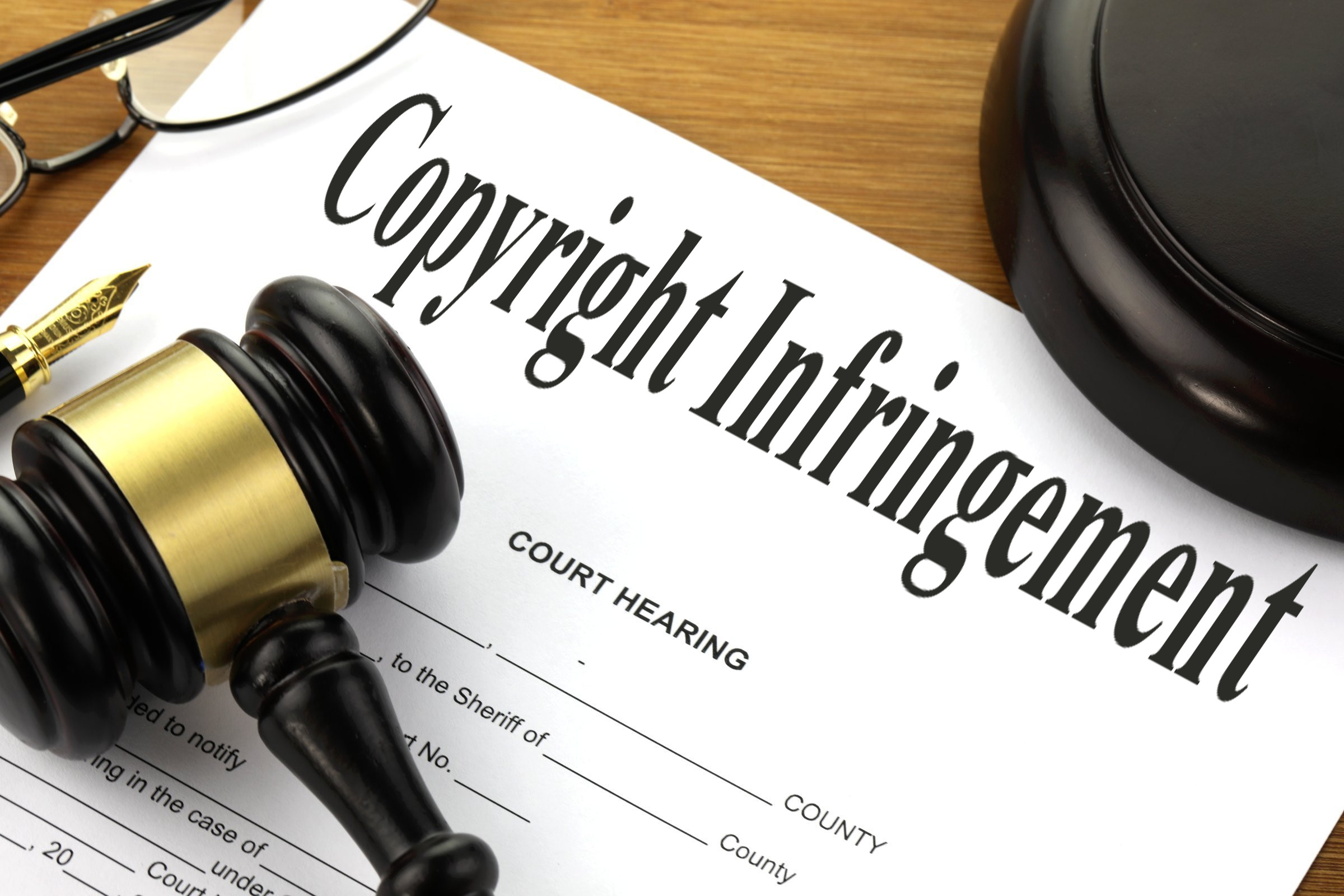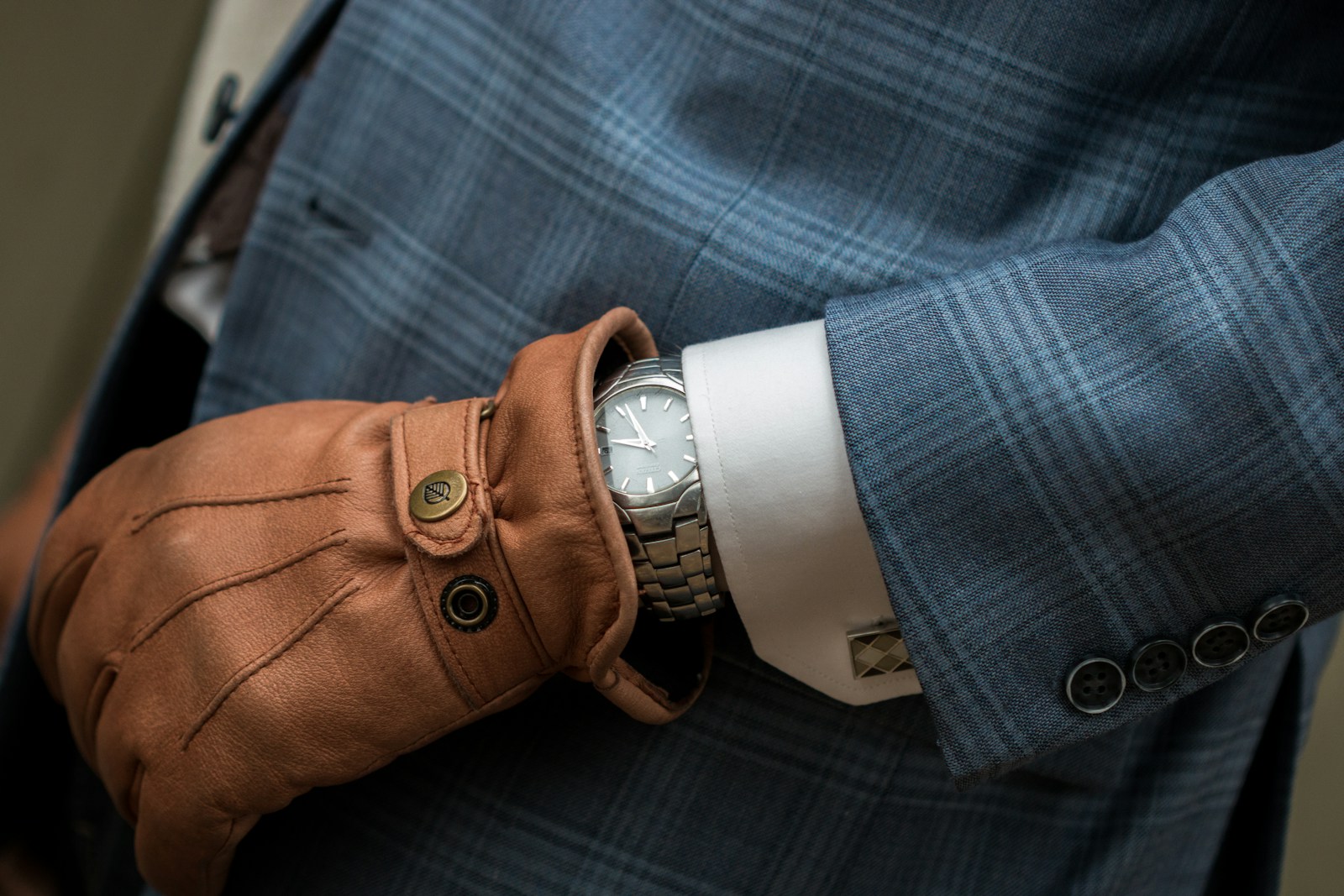
After spending countless hours pouring your creativity into a digital masterpiece, there’s no worse feeling than discovering your work has been stolen. Unfortunately, this disheartening scenario is not a rare occurrence in today’s interconnected digital world. Artists and creative practitioners have always had to contend with art theft, from counterfeit sculptures in Ancient Rome to fraudulent NFTs appearing across marketplaces today.
The ease of sharing and reproducing content online, while a boon for exposure, also presents constant threats of copyright infringement and unauthorized use. Digital art theft is a serious concern for anyone creating in this medium, and while it’s wrong, it can be incredibly difficult to control without the right strategies in place. That’s why understanding and implementing robust protection measures is more crucial than ever.
This comprehensive guide provides you with a roadmap, offering concrete, implementable tips and step-by-step solutions to help you safeguard your valuable digital creations. We’ll explore various ways to ensure legal protection for your digital art, empowering you to continue creating with peace of mind. By taking proactive steps, you can significantly reduce the risk of theft and infringement, ensuring your hard-earned work remains yours alone.
1. **Register Your Art with the Copyright Office**
One of the most foundational and powerful steps you can take to protect your digital art is to officially register it with the copyright office. While copyright protection automatically applies the moment you save your digital file in many countries, registration takes your legal safeguards to an entirely new level. It’s like the difference between having a fence around your house and installing a security system; both offer protection, but one gives you far more peace of mind and power should anything happen.
Registering your copyright enhances your legal protection by providing a public record that clearly establishes your ownership. This formal process not only strengthens your case in the event of copyright infringement but also significantly aids in pursuing statutory damages and attorney’s fees in infringement cases. This public record serves as a powerful deterrent against potential violators, reinforcing the importance of respecting copyright in the digital age.
In the United States, for instance, you can register your copyright with the U.S. Copyright Office. The process is fairly straightforward: you fill out a form, pay a fee, and submit a copy of your artwork. It’s like applying for a passport for your art! Remember, though, that the process might vary depending on your location, and some countries don’t require registration at all for copyright protection. However, it can be beneficial to register anyway, as it can provide stronger evidence in case of legal disputes.
One crucial tip is to make sure you register your copyright as soon as possible after creating your digital art. If someone infringes on your copyright, you generally can’t take legal action until your copyright is registered. Plus, registering your copyright within three months of publishing your work can provide additional benefits in case of litigation, offering a more robust defense of your creative rights. It’s important to remember that while copyright is a powerful tool, it doesn’t protect ideas, concepts, or styles. You can’t copyright the idea of a space-themed digital painting, but you can copyright that one-of-a-kind, star-studded piece you spent hours creating.
Read more about: Revisiting Box Office Bombs: How These Cinematic Gems Defied Initial Failure to Become Undeniable Masterpieces

2. **Use Watermarks and Signatures**
Implementing watermarks and digital signatures on your digital art is an incredibly effective visual strategy for preventing art theft and ensuring your work is recognized as your own across the vast online landscape. A watermark acts like your digital signature, a visible overlay on your image that identifies your art as yours and can effectively discourage others from using it without your permission. Presenting your artwork clearly as your own keeps it from being useful to would-be art thieves.
Many digital art programs, such as Adobe Photoshop or GIMP, offer straightforward options to add a watermark. Typically, it’s as easy as typing your name, logo, or website in a semi-transparent layer directly over your art. The design of the watermark should reflect your unique style while remaining legible, allowing viewers to easily identify the creator. Incorporating a balanced blend of transparency and color can keep the viewer engaged with the artwork, all while serving as a protective measure.
Strategic placement of your watermark is key to its effectiveness. It’s crucial to place it somewhere where it can’t be easily cropped out or digitally removed without significantly altering or damaging the artwork itself. An ideal watermark typically sits in a corner or, for stronger deterrence, across the center of your image, striking a balance between being present and not overly distracting from the art’s aesthetics. Ultimately, an effective watermark not only protects your rights but also serves as a constant reminder of your personal brand in the ever-expanding digital art community.
However, it’s also important to understand the limitations of watermarking. While watermarks can deter casual art thieves and those who may not realize they are infringing, they can still be removed by someone determined and skilled enough. Therefore, watermarking should be considered a vital part of your overall strategy for legal protection of your digital art, but not your entire strategy. It’s one layer in a multi-faceted approach to safeguarding your creations.
Read more about: Unmasking the Fakes: A Collector’s Expert Guide to Spotting Counterfeit Autographs and Memorabilia

3. **Upload a Lower-Resolution File**
When showcasing your incredible digital art online, a simple yet highly effective preventative measure against theft is to upload lower-resolution files for public viewing. This strategy allows your artwork to still look beautiful and perfectly presentable when viewed on a screen, maintaining its aesthetic appeal for your audience. However, these reduced-quality files don’t translate well enough for most commercial uses or high-quality printing.
The beauty of this approach lies in its ability to significantly hinder potential art thieves. If a low-resolution file is stolen, it becomes much more difficult for a would-be art thief to repurpose your work for commercial gain, claim it as their own for print, or use it in any context where high fidelity is required. They might be able to display a blurry or pixelated version, but they won’t be able to profit from it in a meaningful way that matches the quality of your original.
This strategic compromise ensures that you can share your art widely and garner appreciation without inadvertently providing high-value assets to malicious actors. The key is to find the right balance: a resolution that is pleasing for online display but frustratingly inadequate for illicit commercial exploitation. Always remember to keep your high-resolution master files securely stored offline or in a protected cloud storage service, ensuring you always have the pristine original for legitimate purposes.
Read more about: Is a New TV Truly Worth It? Unpacking the Game-Changing Technologies Redefining Your Living Room

4. **Include a Copyright Notice**
Adding a clear and concise copyright notice to your digital artwork is a simple yet incredibly effective method to assert your ownership rights immediately. This notice, typically formatted as “© [Year] [Your Name],” acts as a universal signal to anyone viewing your work that it is protected by copyright law and belongs to you. It serves as an overt declaration of your intellectual property, making it clear that unauthorized use is not permitted.
This small but mighty declaration can be included in various places to maximize its impact. You can visibly place it in a corner of your art, ensuring it’s present without being overly obtrusive. For an even more robust approach, embed the copyright notice directly into the artwork’s metadata. This ensures that even if the visible notice is cropped out, the ownership information remains digitally attached to the file, providing persistent evidence of your rights.
While a copyright notice doesn’t replace formal registration, it significantly strengthens your position by acting as an immediate deterrent and an initial layer of protection. It sends a clear message to casual viewers and potential infringers alike that you are aware of your rights and intend to protect them. This simple act of including your copyright notice is a proactive step that bolsters all other protective measures you implement, making your stance on ownership unmistakable.
Read more about: The Essential 12: Ironclad Contract Clauses Every Influencer and Brand Needs to Know

5. **Licensing Your Work**
Once you’ve poured your soul into creating a digital art piece and have even taken steps to register your copyright, what’s next for leveraging your creation? You might want to consider the strategic approach of licensing your art. Think of licensing as skillfully renting out your art; you still retain full ownership of your masterpiece, but you grant someone else explicit permission to use it in specific ways, under terms that you meticulously define. This can be a brilliant way to generate income from your art while maintaining crucial control over how and where it’s used.
There are several distinct types of licenses you can employ for your digital art, each offering varying degrees of control and exclusivity. Firstly, an exclusive license is akin to handing over the sole keys to your art house; only the licensee can use your art for the agreed-upon purpose, and fascinatingly, this can even preclude you, the artist, from using it in that specific context yourself during the license period. It’s a high-value agreement, often commanding higher fees due to its restrictive nature.
On the other hand, a non-exclusive license operates more like hosting a lively party at your art house. You invite multiple people to use your art for their specific needs, while crucially maintaining the right to use it yourself and license it to countless others. This option offers broader distribution potential and can lead to multiple revenue streams, albeit often at lower individual fees, maximizing your art’s reach and accessibility.
Lastly, we have the increasingly popular Creative Commons license. This is a public license, functioning much like a free-for-all fun fair, yet with important guidelines you set. It allows anyone to use your art, but only within the specific parameters you dictate, such as requiring attribution, prohibiting commercial use, or demanding that derivative works share the same license. It fosters sharing and collaboration while still acknowledging your authorship.
When you’re contemplating licensing your digital art, it’s essential to deeply consider your comfort level with sharing and control. Do you envision keeping your art exclusive to yourself and a select few, aiming for high-end, bespoke usage? Or do you aspire to share it broadly with the world, encouraging its adaptation and spread under controlled conditions? The choice profoundly shapes your artistic journey and business model.
Remember, licensing is a cornerstone of the legal protection for digital art. It strategically empowers you with control over how your art is utilized, ensures proper attribution, and simultaneously provides a tangible income stream. It’s truly a win-win scenario, transforming your creative output into a valuable, managed asset. By understanding these options, you can confidently navigate the commercial landscape while protecting your artistic integrity.
Read more about: The Essential 12: Ironclad Contract Clauses Every Influencer and Brand Needs to Know

6. **Use Blockchain Technology**
Blockchain, the innovative technology famously underpinning cryptocurrencies like Bitcoin, might seem like an unexpected ally in your critical quest for legal protection for digital art. However, it is rapidly proving itself to be an exceptionally powerful and transformative tool within the art world, fundamentally changing how artists can assert and prove ownership. Let’s demystify how this distributed ledger technology works to your advantage.
At its core, blockchain functions as a digital ledger that meticulously records transactions in an immutable and decentralized manner. In the specific context of digital art, this incredible technology can be harnessed to forge a permanent and unchangeable record of your artwork’s creation and its subsequent ownership history. This concept is technically known as “provenance,” and blockchain provides an unshakeable, transparent, and verifiable trail of this crucial information.
Imagine you, as an artist, have just put the finishing touches on a breathtaking digital masterpiece. Instead of merely uploading it to a standard portfolio site, you can now upload it to a specialized blockchain platform such as Artory or Verisart. The platform then meticulously records all the essential details about your artwork – including its precise creation date, the original file, and your verified identity as the artist – encapsulating this data within a digital block. This block is subsequently added to the ever-growing blockchain, where it remains forever, providing irrefutable and tamper-proof evidence of your artwork’s provenance.
And the benefits don’t stop there. With the power of blockchain, you can also effortlessly create and issue digital certificates of authenticity for your art, further solidifying its verifiable history. Furthermore, you gain the remarkable ability to track your art’s entire journey as it is bought, sold, or displayed in various digital galleries and exhibitions across the globe. This ensures that your name, as the original creator, remains perpetually attached to your work, providing unwavering attribution no matter where it travels in the digital ether.
In a nutshell, blockchain offers a revolutionary and exhilarating new avenue to significantly bolster the legal protection for your digital art. It doesn’t aim to replace traditional methods like copyright registration, strategic licensing, or visible watermarking; rather, it profoundly enhances them, adding an unparalleled layer of secure, transparent, and verifiable ownership. In a world where digital art theft is, regrettably, all too common, every additional layer of robust protection truly matters for safeguarding your invaluable creative assets.
Read more about: From Worse to Worst: Six Tech Products That Defined a Decade of Commercial Struggles and Surprising Comebacks

7. **Protect Your Art with Specialized Services (e.g., DeviantArt Protect)**
While individual actions like watermarking and copyright registration are crucial, leveraging specialized services designed specifically for artists can provide an extra layer of automated and powerful protection for your digital art. These platforms are built with the unique challenges of the digital art world in mind, offering tools that go beyond basic preventative measures to actively safeguard your work and alert you to potential infringements. They are like having a dedicated digital guardian watching over your creations 24/7.
For instance, DeviantArt Protect offers a sophisticated system where you can upload your art to a secure account. This service then continuously monitors the internet, acting as a vigilant watchdog for unauthorized uses of your work. When potential infringement is detected, you won’t be left in the dark; instead, you’ll receive an immediate alert, often accompanied by a ready-to-use DMCA takedown link. This streamlines the often-daunting process of addressing theft, allowing you to take quick, decisive action without extensive legal knowledge.
A significant advantage of these specialized services is their ability to identify specific types of infringement, such as detecting if your work is being sold as NFTs without your permission. Given the rise of NFT marketplaces and associated fraudulent activity, having a system that specifically checks for this can be invaluable. These services are designed to proactively monitor for unauthorized use, giving you peace of mind that your art is being actively protected in a complex digital landscape.
Such platforms often thrive on a community-driven model, where the collective vigilance of artists and fans contributes to a stronger defense against theft. By being part of such a service, you not only benefit from its technical capabilities but also join a network of creators committed to upholding artistic integrity. These specialized services empower you to be more proactive and efficient in protecting your art, providing advanced tools that complement your personal efforts and reinforce your control over your digital assets.
Now that we’ve covered the crucial proactive steps to secure your digital art from potential misuse, it’s vital to acknowledge that even with the most robust defenses, infringement can still occur. Just as a strong lock doesn’t eliminate all risk, your digital safeguards won’t always deter the most determined art thieves. The next essential phase in protecting your creative output is therefore about vigilance, effective detection, and decisive action against unauthorized use. This section will empower you with the strategies to identify digital art theft and swiftly respond, ensuring your hard-earned work remains rightfully yours.

8. **Understand the Telltale Signs of Art Theft**
Vigilance truly begins with knowing precisely what to look for. Recognizing the subtle—or sometimes blatant—indicators of digital art theft can be your first and most critical line of defense, enabling you to identify infringement early before it escalates. Becoming familiar with these warning signs transforms you from a passive creator into an active guardian of your intellectual property.
Keep a keen eye out for specific alterations to your artwork that strongly suggest unauthorized use. For instance, if you designed your artwork with a watermark or a distinct digital signature, and you encounter a version where these identifying marks have been inexplicably removed or suspiciously cropped out, that’s a significant red flag. These deliberate omissions are often attempts to erase your authorship and claim the work as original.
Another common indicator is a noticeable drop in the image quality. If your high-resolution masterpiece suddenly appears blurry, pixelated, or simply in a much poorer resolution than you uploaded, it could mean a thief has grabbed a low-quality web image and attempted to use it for purposes beyond its intended online display. These visual cues are not just cosmetic changes; they are often direct evidence of unauthorized reproduction.
Read more about: Cybersecurity Experts Warn: Unpacking the New Wave of Incredibly Real Text Phishing Scams and How to Stay Safe

9. **Utilize Reverse Image Search Tools for Detection**
Once you have a suspicion, or simply as a routine check, reverse image search tools become your digital bloodhounds, tirelessly sniffing out instances of your art across the internet. These incredibly powerful, free tools can save you countless hours of manual searching by automatically scouring millions of websites to find matches or visually similar images. Integrating reverse image searches into your workflow is a practical, actionable step toward continuous protection.
Platforms like Google Images and TinEye are your go-to resources for this critical task. The process couldn’t be simpler: you merely upload a copy of your artwork, or paste its URL, into the search bar. The tool then rapidly processes the image, presenting you with a comprehensive list of every website where that specific image, or a close variation of it, has been detected online.
The results can be eye-opening, revealing unexpected uses of your art on blogs, commercial sites, or even social media profiles you weren’t aware of. This capability allows you to quickly identify unauthorized distribution, empowering you to address potential infringements directly and efficiently, rather than hoping to stumble upon them by chance.
Read more about: NWS Extreme Cold Alert: A Comprehensive Consumer’s Guide to Winterizing Your Home and Car for Ultimate Safety and Preparedness

10. **Monitor Online Forums and Marketplaces Actively**
Beyond automated tools, a powerful layer of protection comes from actively monitoring the digital spaces where art is shared, discussed, and sold. This proactive engagement not only helps you detect potential theft but also leverages the collective vigilance of the wider artistic community, transforming onlookers into allies in your defense. Cultivating this awareness is a cornerstone of vigilance.
Make it a habit to regularly check art forums, online galleries, and digital marketplaces. This includes general social media platforms where your art might be reposted without credit, as well as specialized NFT marketplaces where fraudulent minting can occur. Setting up simple search alerts for your name, artist handle, or specific artwork titles can provide automated notifications whenever your work is mentioned or appears in new contexts.
Furthermore, fostering a strong connection with your online community—whether they are loyal fans or fellow artists—can create an invaluable network of eyes and ears. People who feel a sense of belonging to your community are far more likely to notify you if they spot something suspicious. This communal vigilance transforms the daunting task of monitoring the entire internet into a collaborative effort, making it more difficult for thieves to operate unnoticed.
Read more about: The Insidious Erosion of Quality: Why a Single Cheap Auto Part Can Sink Your Business and Your Ride

11. **Contact the Offender Directly for Resolution**
When you discover an instance of digital art theft, the initial impulse might be frustration or anger, but the most effective first step is often a calm and direct communication with the alleged offender. Many individuals who use copyrighted material without permission may not realize they are infringing, or they might simply be unaware of proper attribution protocols. Approaching them directly can often resolve the situation swiftly and amicably.
Start by gathering all pertinent evidence of the infringement, including screenshots of the unauthorized use, the URL where it appears, and any personal evidence of your ownership, such as copyright registration details or original creation files. With this documentation in hand, craft a polite yet firm message to the person or entity using your art. Clearly state that the artwork belongs to you, that its use is unauthorized, and request its immediate removal.
Remember to maintain a professional tone, focusing on the facts of the infringement rather than accusations. Keeping a detailed record of all communications—dates, times, messages sent and received—is crucial. This documentation provides a clear paper trail should further action become necessary. Often, a direct request is all it takes to prompt compliance and have your artwork removed from unauthorized platforms.
Read more about: Is Your Phone Battery Dying Too Fast? Uncover the 15 Sneaky Culprits and Master the Fixes!

12. **Report Infringement to Relevant Platforms**
If your direct communication with the offender is ignored, refused, or simply not feasible, the next crucial step is to leverage the reporting mechanisms provided by the platforms hosting the infringing content. Most major social media sites, online galleries, e-commerce platforms, and NFT marketplaces have established procedures for reporting copyright infringement. These systems are designed to help copyright holders enforce their rights.
To initiate a report, you will typically need to navigate to the platform’s ‘Report Abuse,’ ‘Copyright Infringement,’ or ‘Takedown Request’ section. Here, you’ll be guided through a form where you must provide evidence of your ownership, details of the infringing content, and specific URLs where your work is being misused. Be as thorough and precise as possible in your submission, as the platform’s ability to act depends on the clarity and strength of your evidence.
This process is particularly vital when dealing with NFT theft. If your art has been minted and sold as an NFT without your permission, you’ll need to file a detailed report directly with the NFT marketplace in question. These marketplaces are increasingly recognizing the problem of fraudulent NFTs and are often equipped to investigate and take down infringing listings, safeguarding artists from severe financial and reputational damage.
Read more about: The Essential 12: Ironclad Contract Clauses Every Influencer and Brand Needs to Know

13. **File DMCA Takedown Notices for Online Hosts**
For widespread or particularly persistent infringements, especially those hosted on websites or services within the United States’ jurisdiction, the Digital Millennium Copyright Act (DMCA) offers a powerful legal framework. Filing a DMCA takedown notice is a formal, statutory method for copyright holders to request the removal of infringing material from internet service providers (ISPs) or website hosts. This is a critical legal lever you can pull when other methods have failed.
The DMCA allows copyright holders to send a formal notice to an online service provider, demanding that they remove or disable access to copyrighted material hosted on their servers. This effectively places the legal responsibility on the host to act, protecting them from liability if they comply swiftly. For artists, it means a direct route to compelling content removal without necessarily resorting to a full-blown lawsuit.
To effectively file a DMCA takedown notice, you must include specific information: a clear identification of the copyrighted work, a description of the infringing material and its location (specific URLs), your contact information, a statement of good faith belief regarding the unauthorized use, and a statement affirming the accuracy of the notice under penalty of perjury. Services like DeviantArt Protect often streamline this process, providing alerts with ready-to-use DMCA takedown links, allowing you to take quick, decisive action against offending content.

14. **Pursue Legal Actions if Necessary**
While direct communication, platform reporting, and DMCA notices resolve many infringement cases, there are instances where these steps are insufficient, or the scale of the theft warrants a stronger response. In such situations, pursuing legal action becomes a necessary, albeit often a last resort, to fully uphold your rights and seek appropriate restitution. This step underscores the gravity of your intellectual property rights.
The journey toward legal action typically begins with meticulous documentation of the infringement. This includes collecting all evidence of unauthorized use, records of your copyright registration, and any previous attempts at direct communication or takedown notices. With this comprehensive portfolio of evidence, the next crucial step is to consult with a lawyer specializing in intellectual property law. Their expertise is invaluable in navigating the complexities of copyright litigation.
A lawyer can help you draft and send a formal “cease and desist” letter, which is a powerful legal document demanding that the infringer immediately stop using your artwork. If this does not yield results, your legal counsel can guide you through the process of filing a lawsuit. Potential outcomes can range from court-ordered removal of the infringing material to financial compensation for damages, statutory damages, and even attorney’s fees, effectively making the theft unprofitable for the infringer. While legal action can be time-consuming and costly, it serves as a powerful testament to the value of your work and your unwavering commitment to protecting your creative legacy.
Read more about: Pentagon Deploys USS Gerald R. Ford Carrier Strike Group to Caribbean Amid Escalating Anti-Narcotics Campaign
The digital realm offers unprecedented opportunities for artists to share their creations with the world, but it also presents a landscape where vigilance is paramount. By embracing both proactive safeguards and reactive strategies—from understanding the signs of theft to taking decisive legal action—you empower yourself to navigate this landscape with confidence. Remember, every step you take to protect your digital art not only secures your individual masterpieces but also contributes to a stronger, more respectful creative community where artistic integrity is celebrated and defended. Keep creating, keep innovating, and know that you have the tools to protect what’s yours.




